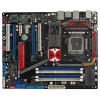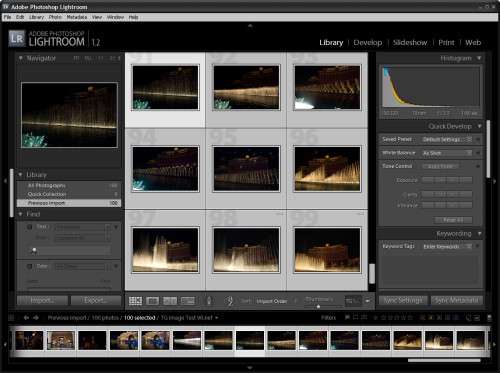- Qualcomm Launches Snapdragon 4 Gen 2 Mobile Platform
- AMD Launches Ryzen PRO 7000 Series Mobile & Desktop Platform
- Intel Launches Sleek Single-Slot Arc Pro A60 Workstation Graphics Card
- NVIDIA Announces Latest Ada Lovelace Additions: GeForce RTX 4060 Ti & RTX 4060
- Maxon Redshift With AMD Radeon GPU Rendering Support Now Available
ASUS Rampage Extreme

When the time came to design the Rampage Extreme, ASUS’ R&D went right to town. The X48-based board proves to be the most feature-packed one we’ve ever come across, and also one of the most overclockable. Aside from the robust design, water-cooled Northbridge and LCD Poster, the board even includes overclocking controls right on the PCB.
Page 6 – Multi-Media: DivX, Adobe Lightroom & 3DS Max 9
For our video conversion test, we use VirtualDub to transcode (converting from one codec to another) a 0.99GB high-quality DivX H.264 AVI video of Half-Life 2: Episode Two gameplay with stereo audio. The video is just under 4 minutes in length and has a 720p resolution (1280×720).
For our testing, we encode the video two different ways. The first transcoding run (“720p Video Recode”) encodes the video at the same 720p resolution but with a lower quality, to achieve a more acceptable file size for distribution (~150MB).
The second transcoding run (“Mobile Video Recode”) scales the video to a 480×272 resolution, similar to what some mobile devices such as Apple’s iPod use. For both tests, “Enhanced multithreading” is enabled in the codec control panel, as well as “Experimental full search” using the highest version of the SSE instruction set that the CPU supports.

Adobe Lightroom 1.4
Photo manipulation benchmarks are more relevant than ever, given the proliferation of high-end digital photography hardware. For this benchmark, we test the system’s handling of RAW photo data using Adobe Lightroom, an excellent RAW photo editor and organizer that’s easy to use and looks fantastic.
For our testing, we take 100 RAW files (in Nikon’s .NEF file format) which have a 10-megapixel resolution, and export them as JPEG files in 1000×669 resolution, like most of the photos we use here on the website. Such a result could also be easily distributed online or saved as a low-resolution backup. This test involves not only scaling of the image itself, but encoding in a different image format entirely. The test is timed indirectly using a stopwatch, and times are accurate to within +/- 0.25 seconds.

3DS Max 9
Autodesk’s 3ds Max 9 is considered the industry standard when it comes to 3D modeling and animation, counting DreamWorks, BioWare, and Blizzard Entertainment among its users. It’s a multithreaded application that’s designed to be right at home on multi-CPU workstations or render farms, so it’s right up our alley for testing systems with multi-core processors.
Instead of the polygon-based rasterization handled by most GPUs, 3ds Max 9 uses scanline rendering as its chief method, but some ray-tracing plugins exist (which we don’t use).
In our testing, we use a standard dragon model provided with 3ds Max, ‘Dragon_Character_Rig.max’. The scene is rendered in two formats. First, a single frame from the animation is rendered at a resolution of 1920×1080 (1080p). Then, a 60-frame sequence of the same model is rendered to a 490×270 resolution AVI file, which can be exported to a portable media player.

Nothing out of the ordinary here, although the Rampage did manage to achieve the best Adobe Lightroom score – beating the second-place by two seconds.
Support our efforts! With ad revenue at an all-time low for written websites, we're relying more than ever on reader support to help us continue putting so much effort into this type of content. You can support us by becoming a Patron, or by using our Amazon shopping affiliate links listed through our articles. Thanks for your support!








